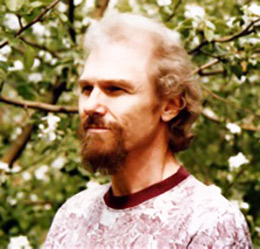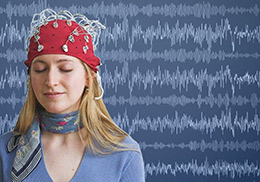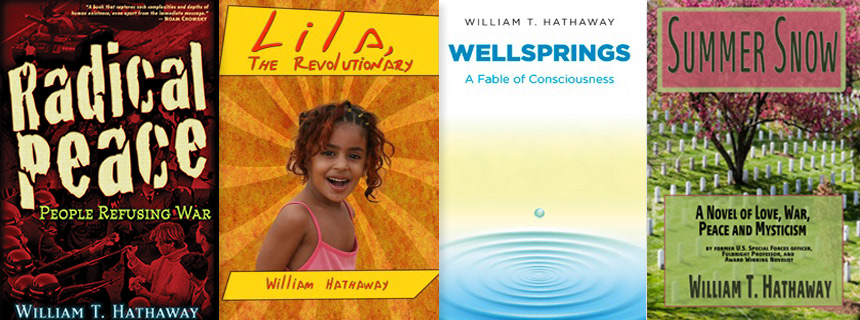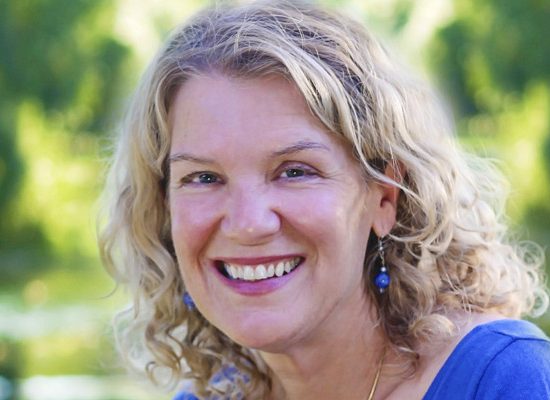At birth I suffered a brain injury. An EEG test showed chaotic, abnormal brain waves, and in school I had Attention Deficit Disorder (ADD). I couldn’t concentrate, and my thoughts were clouded. My grades were mediocre, and I flunked out of my first university. I wanted to become a writer, but my writing was disorganized and unclear. In despair, I took drugs, but they made my thoughts even foggier.

The younger Bill Hathaway
Then I started the Transcendental Meditation® (TM) technique. In a few weeks my thoughts became clearer, and I didn’t want drugs anymore. I could concentrate. And I could write. One of my essays gained me entrance to a much better university, Columbia, and this time my grades were so good I received a scholarship. My first novel won a Rinehart Foundation Award, and I became a professor of creative writing and won a Fulbright grant to teach at universities in Germany. I’ve now published eight books.
Today my EEG shows normal, orderly brain waves with no sign of damage. I feel that my daily TM practice was a key component in recovering from my birth injury, and helped give me access to my talent and mental abilities. Without Transcendental Meditation, this change wouldn’t have occurred; I’m sure of that.
Nourishing and Synchronizing Our Brains
How is this possible? Physiological studies show that during TM, our brain waves become more coherent, changing from the usual scattered, disordered patterns into synchronized waves flowing from back to front and coordinating across both hemispheres, an indication of more integrated mental functioning. The nourishing blood-flow to the brain increases. As a result, our whole brain becomes activated, enlivening more of our mental potential and enabling us to develop our talents.

How researchers measure synchronized EEG waves during TM practice
Melatonin and serotonin, neurotransmitters that promote well-being and relieve depression, increase. Arginine vasopressin, a hormone that regulates blood pressure and improves memory and learning ability, increases. The stress factors cortisol, adrenalin, blood lactate, and blood pressure decrease, indicating lessened anxiety. On the skin, electrical conductance decreases, a sign of relaxation, and we are also fully alert and aware of the surroundings. In this rejuvenating state of restful alertness, the physiology repairs itself and frees the system from accumulated stress.
Comparison studies show that due to its effortlessness, TM achieves this state of restful alertness more effectively than other forms of meditation, as Dr. David Orme-Johnson, Dr. Fred Travis, and other researchers have found. TM also increases creativity, as I have experienced firsthand. Our mind is quieter and calmer, even outside of meditation, so we are able to hear the soft, inner whispers of creative ideas. And since TM is energizing, we are able to actualize them.
Studies show that during TM… the nourishing blood flow to the brain increases. As a result, our whole brain becomes activated, enlivening more of our mental potential and enabling us to develop our talents.
TM as Creative Inspiration
The direction these ideas take depends on our desires; they can enrich our art, our business, and our human relationships. Transcendental Meditation directly inspired three of my books.
Summer Snow is a novel set in Central Asia, as an American warrior falls in love with a Sufi woman who persuades him to learn TM. He discovers that higher consciousness is more effective than violence, but his new insights get him into trouble with the army. The escalating violence threatens their future together and the lives of thousands. To save them, they use Vedic techniques designed to bring peace to the collective consciousness and end war. But can they make them work in time?
Wellsprings: A Fable of Consciousness is set in 2026 as the earth’s ecosystem has broken down under human abuse. Water supplies are shrinking, crops withering, forests dying. In the midst of environmental and social collapse, an old woman and a young man set out to heal nature and reactivate the cycle of flow through Transcendental Meditation. But the corporations that control the remaining water lash out to stop them.
Radical Peace: People Refusing War is narrative nonfiction about activists working for peace in unconventional ways. Noam Chomsky called it, “A book that captures such complexities and depths of human existence, even apart from the immediate message.” The concluding chapter presents the Maharishi Effect as the best way to create permanent peace.

Four of William Hathaway’s books were directly inspired by the Transcendental Meditation technique
The Best Thing You Can Do for Your Brain
For me, Attention Deficit Disorder is a thing of the past. Unfortunately, ADD and ADHD have now become a national epidemic, but TM is helping a new generation of students through the “Quiet Time” programs of the David Lynch FoundationSM.
The scientific evidence is clear, and my life is living proof: Transcendental Meditation is the best thing you can do for your brain.

William T. Hathaway’s first novel, A World of Hurt, received the Rinehart Foundation Award. He was a professor in Maharishi International University’s Professional Writing program and is currently an adjunct professor at the University of Oldenburg in Germany, where he and his wife, Daniela Rommel, also run the local Transcendental Meditation Center. His new book, Lila, the Revolutionary, is a fable for adults about an eight-year-old girl who sparks a world revolution for social justice.




Thanks, William, for sharing your story. Even though I’ve known you all these years, I didn’t know about your brain injury. Congratulations on your successes. I’ve read most of your books, but not yet Lila.
love to daniela..wonderful to read your story and that you are teaching now
Hi, Carol, and greetings from across the pond. Daniela sends her best wishes.